
Case #385 - December 2014
A 10-year-old girl residing in Pennsylvania was hospitalized with a 101.5º F fever, vomiting, abdominal pain, and diarrhea. The patient had recently returned from visiting family in West Africa. A blood specimen was collected in EDTA and sent to the hematology lab for routine work-up, including preparation of thick and thin films for malaria diagnosis. Suspect organisms were seen by the attending hematologist. The slides were forwarded on to the state health lab, whose microbiologist took digital images and sent them to the DPDx Team for diagnostic assistance. Figures A-F show four of the images received for consultation. What is your diagnosis? Based on what criteria?
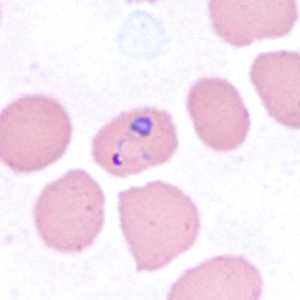
Figure A
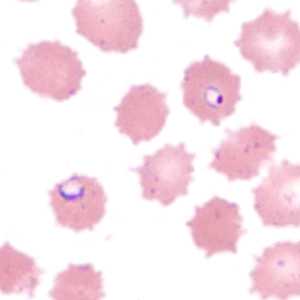
Figure B
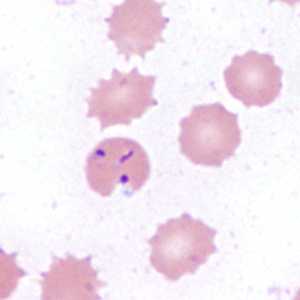
Figure C
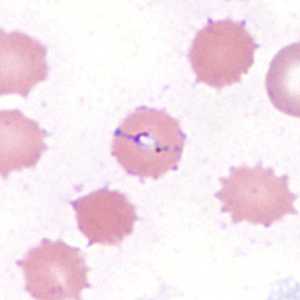
Figure D

Figure E
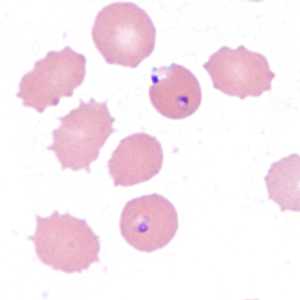
Figure F
Case Answer
This was a case of malaria caused by Plasmodium falciparum. Diagnostic morphologic features included:
- small rings and developing trophozoites in normal-sized infected RBCs.
- multiply-infected RBCs (Figures C, E, and F).
- appliqué forms (Figures C and F).
- presence of pigment (best seen in Figures B and D).
- an absence of other stages.
The images demonstrated many crenated RBCs, probably due to a delay in processing. Crenation of old RBCs should not be confused for fimbriated RBCs seen in cases of malaria caused by P. ovale. The presence of pigment ruled-out Babesia, which is endemic in Pennsylvania. In this case, PCR supported the morphologic diagnosis.
More on: Malaria
Images presented in the monthly case studies are from specimens submitted for diagnosis or archiving. On rare occasions, clinical histories given may be partly fictitious.
DPDx is an education resource designed for health professionals and laboratory scientists. For an overview including prevention and control visit www.cdc.gov/parasites/.
- Page last reviewed: August 24, 2016
- Page last updated: August 24, 2016
- Content source:
- Global Health – Division of Parasitic Diseases and Malaria
- Notice: Linking to a non-federal site does not constitute an endorsement by HHS, CDC or any of its employees of the sponsors or the information and products presented on the site.
- Maintained By:


 ShareCompartir
ShareCompartir